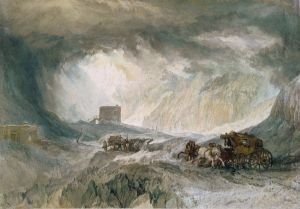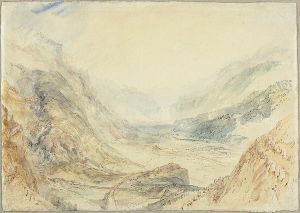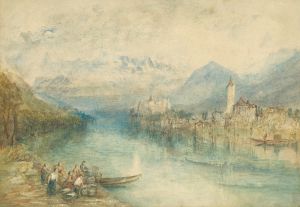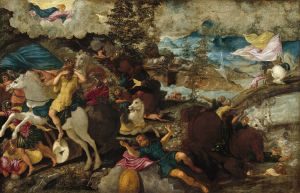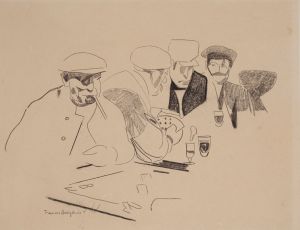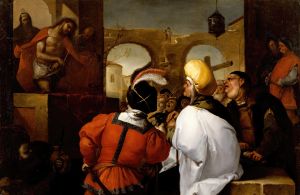
Depositing of John Bellini’s Three Pictures in La Chiesa Redentore, Venice
A hand-painted replica of Joseph Mallord William Turner’s masterpiece Depositing of John Bellini’s Three Pictures in La Chiesa Redentore, Venice, meticulously crafted by professional artists to capture the true essence of the original. Each piece is created with museum-quality canvas and rare mineral pigments, carefully painted by experienced artists with delicate brushstrokes and rich, layered colors to perfectly recreate the texture of the original artwork. Unlike machine-printed reproductions, this hand-painted version brings the painting to life, infused with the artist’s emotions and skill in every stroke. Whether for personal collection or home decoration, it instantly elevates the artistic atmosphere of any space.
Joseph Mallord William Turner, one of the most renowned British painters of the 19th century, is celebrated for his expressive colorization, imaginative landscapes, and turbulent marine paintings. Among his extensive body of work, the painting titled "Depositing of John Bellini’s Three Pictures in La Chiesa Redentore, Venice" stands out as a testament to his fascination with Venice and its artistic heritage.
Turner was deeply inspired by the city of Venice, which he visited multiple times during his lifetime. The city’s unique light, architecture, and atmosphere provided endless inspiration for his work. Venice, with its rich history and vibrant art scene, was a natural muse for Turner, who was captivated by its beauty and the interplay of light and water.
The painting "Depositing of John Bellini’s Three Pictures in La Chiesa Redentore, Venice" reflects Turner’s admiration for the Venetian master Giovanni Bellini, a pivotal figure in the Venetian Renaissance. Bellini was known for his innovative use of color and light, qualities that Turner himself sought to emulate and expand upon in his own work. By referencing Bellini in the title, Turner pays homage to the artistic legacy that influenced his own development as a painter.
The setting of the painting, La Chiesa del Redentore, is a significant architectural landmark in Venice. Designed by the renowned architect Andrea Palladio, the church is a masterpiece of Renaissance architecture and holds great historical and cultural importance. Turner’s choice to depict this location underscores his appreciation for Venice’s architectural splendor and its role as a repository of artistic treasures.
In this work, Turner employs his signature style, characterized by a luminous palette and fluid brushwork, to capture the ethereal quality of Venice. The painting likely features the interplay of light and shadow, a hallmark of Turner’s technique, which he used to evoke the transient beauty of the city. His ability to convey atmosphere and emotion through color and form is evident in this piece, as in many of his Venetian scenes.
Turner’s Venetian paintings, including this one, are celebrated for their ability to transcend mere representation and evoke a sense of the sublime. His work often blurs the line between reality and imagination, inviting viewers to experience the emotional resonance of the scene rather than just its physical details.
While specific details about the painting "Depositing of John Bellini’s Three Pictures in La Chiesa Redentore, Venice" may not be extensively documented, its thematic elements and context within Turner’s oeuvre are clear. It stands as a tribute to the enduring influence of Venetian art and architecture on Turner’s work and highlights his role in the evolution of landscape painting.
In summary, Joseph Mallord William Turner’s painting "Depositing of John Bellini’s Three Pictures in La Chiesa Redentore, Venice" is a reflection of his deep connection to Venice and its artistic heritage. Through his masterful use of light and color, Turner captures the essence of the city and pays homage to the legacy of Giovanni Bellini, while also contributing to the rich tradition of landscape painting.









